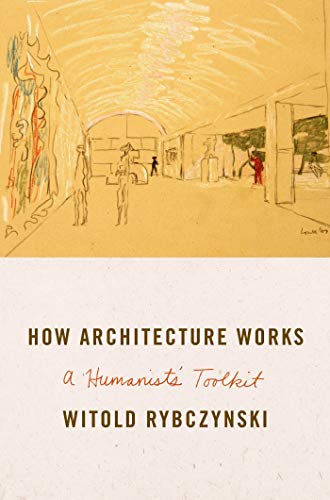Bargain Bin Books
How Architecture Works: A Humanist's Toolkit
Couldn't load pickup availability
Author: Rybczynski, Witold
Edition: First Edition
Number Of Pages: 368
Details:
An essential toolkit for understanding architecture as both art form and the setting for our everyday livesWe spend most of our days and nights in buildings, living and working and sometimes playing. Buildings often overawe us with their beauty. Architecture is both setting for our everyday lives and public art form―but it remains mysterious to most of us. In How Architecture Works, Witold Rybczynski, one of our best, most stylish critics and winner of the Vincent Scully Prize for his architectural writing, answers our most fundamental questions about how good―and not-so-good―buildings are designed and constructed. Introducing the reader to the rich and varied world of modern architecture, he takes us behind the scenes, revealing how architects as different as Frank Gehry, Renzo Piano, and Robert A. M. Stern envision and create their designs. He teaches us how to "read" plans, how buildings respond to their settings, and how the smallest detail―of a stair balustrade, for instance―can convey an architect's vision. Ranging widely from a war memorial in London to an opera house in St. Petersburg, from the National Museum of African American History and Culture in Washington, D.C., to a famous architect's private retreat in downtown Princeton, How Architecture Works, explains the central elements that make up good building design. It is an enlightening humanist's toolkit for thinking about the built environment and seeing it afresh. "Architecture, if it is any good, speaks to all of us," Rybczynski writes. This revelatory book is his grand tour of architecture today. From Publishers Weekly Starred Review. Prize-winning architectural writer and University of Pennsylvania emeritus professor Rybczynski (A Clearing in the Distance) follows in the spirit of Steen Eiler Rasmussen's classic Experiencing Architecture to supply an ideal layperson's handbook on the fundamentals of modern and contemporary architecture. Focusing on the functional and aesthetic considerations that define a building, and often calling upon his experience as an architect to illustrate major concepts, Rybczynski vividly explains particulars such as how to read architectural plans and how sunlight figures into designs, as well as discussing issues of style, history, and taste. While the book tends to address structure after structure at a speedy clip, the upshot is a commanding view of the field for beginners. An especially rich example is the walk-through of several designs submitted to the competition for the National Museum of African-American History and Culture: this not only illustrates how different architects respond to constraints, but also how such competitions function. Rybczynski is not a polemicist, but he effectively argues certain basic principles, and makes a cogent analogy to typography to show how the past always influences the present. Here, architecture is treated as craft executed with prudence and conviction. The author doesn't care much for theories, or buildings that fail to be practical, but welcomes a variety of design approaches, all of which make him a model teacher. 140 b&w illus. (Oct.) From Booklist *Starred Review* “Architecture, if it is any good, speaks to us all.” With this maxim, the first of many clarifying observations in this conversational and invigorating treatise, Rybczynski deepens our understanding of all that goes into the design and construction of buildings. An architect, emeritus professor, and outstanding and prolific architectural writer, Rybczynski takes palpable pleasure in throwing open the doors to reveal the complex, often contradictory demands of architecture, illuminating “the practical as well as the aesthetic.” His “toolkit” contains 10 fundamental topics, from ideas to structural matters, the difference between a building’s setting and site, and the importance of such seemingly prosaic details as balustrades. As he instructs us in the implications of the fact that “new buildi...
EAN: 9780374211745
Release Date: 08-10-2013
Languages: english
Item Note: Great shape- pages are unmarked and sharp. Hardcover Used - Like New Ships fast! 2013First Edition
Item Condition: UsedLikeNew
Binding: Hardcover
Share


